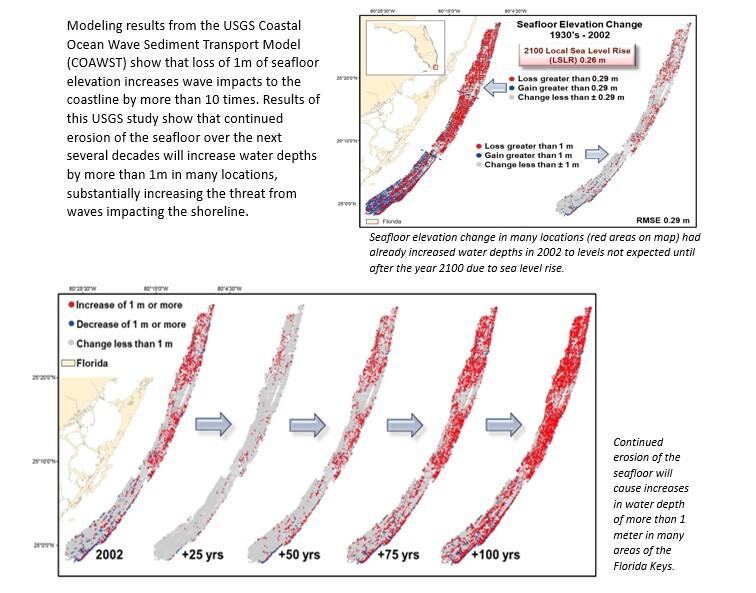Reef Elevation Loss
Hurricane Irma drove extreme waves and regional-scale seafloor sediment suspension throughout South Florida and the Florida Keys. These forces resulted in substantial erosion of the seafloor, and damage to habitats that protect the coastal populations and infrastructure from waves and storms.
USGS is measuring changes in seafloor structure and elevation along the Florida Keys reef tract that resulted from Hurricane Irma to assess damage resulting from the storm and to target areas for habitat restoration. USGS is also developing models that predict how the seafloor will change in the future and the increase in vulnerability of the coastline to waves and storms resulting from those changes.

Coral reefs and the shallow seafloor that surrounds them serve as a natural barrier that protects coastal populations and infrastructure from storms, waves, and erosion. Declining coral reef health over the past couple of decades has caused coral reef and seafloor erosion while sea level has continued to rise. This divergence between decreasing seafloor elevation and increasing sea level has caused water depths to increase in the Florida Keys to levels that were not expected until after the year 2100 and has already increased vulnerability to coastal hazards like storms, waves and erosion. Storms, like Hurricane Irma, can accelerate erosion of the seafloor by moving sediment off of the reef and damaging corals and other seafloor habitats.


Return to Storm-induced Coastal Hazard Assessment for Coral Reef Coasts
Return to Assessment of Coastal Impacts and Hazards in Florida and Georgia

